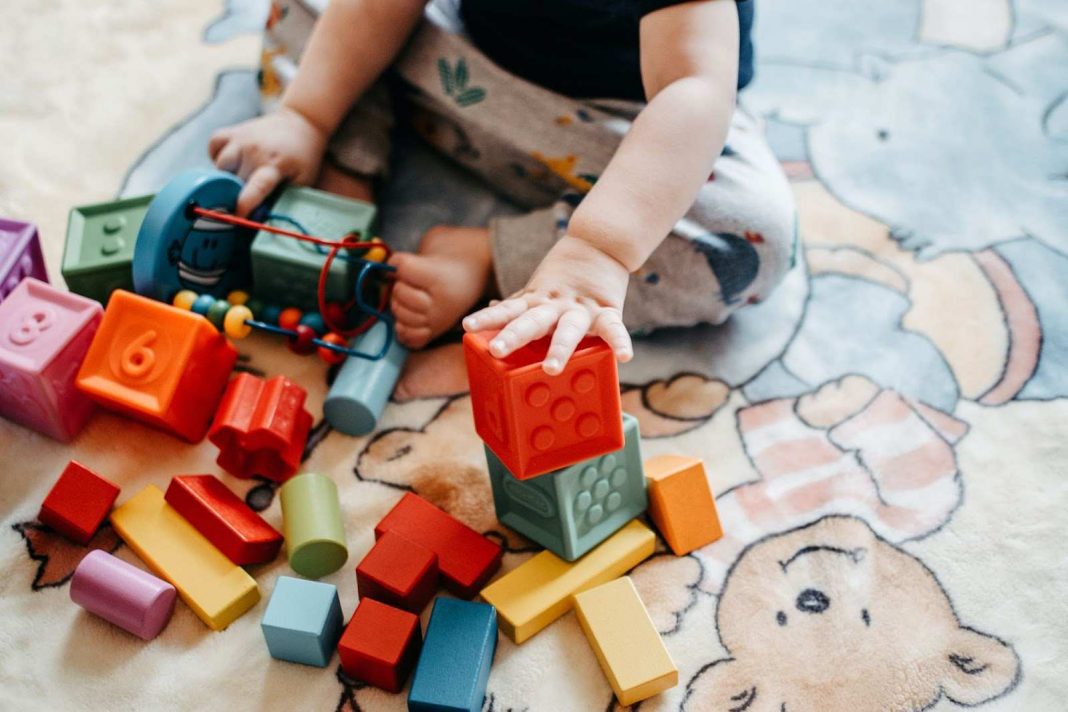Learning through play or LTP can be one of the most effective ways that children learn, grow, and develop all of the mental, physical, and emotional skills they will need through their developing years and into adulthood.
Math & ELA | PreK To Grade 5
Kids see fun.
You see real learning outcomes.
Watch your kids fall in love with math & reading through our scientifically designed curriculum.
Parents, try for free Teachers, use for free
Although there is a time and a place for academic learning, allowing children the space to play and interact with the world around them is paramount.
It’s also what many psychologists and educators believe is the secret to giving kids all the tools they need to be successful in school and in life.
So, what exactly is LTP , why is it important, and how can children benefit from it?
In today’s blog, we’re taking a look at both of these questions as well as some of the best activities you can use to introduce your child to play-based learning.
We will also go over some basic tips and digital solutions to remember when implementing play-based learning at home and in the classroom.
What is Learning Through Play?
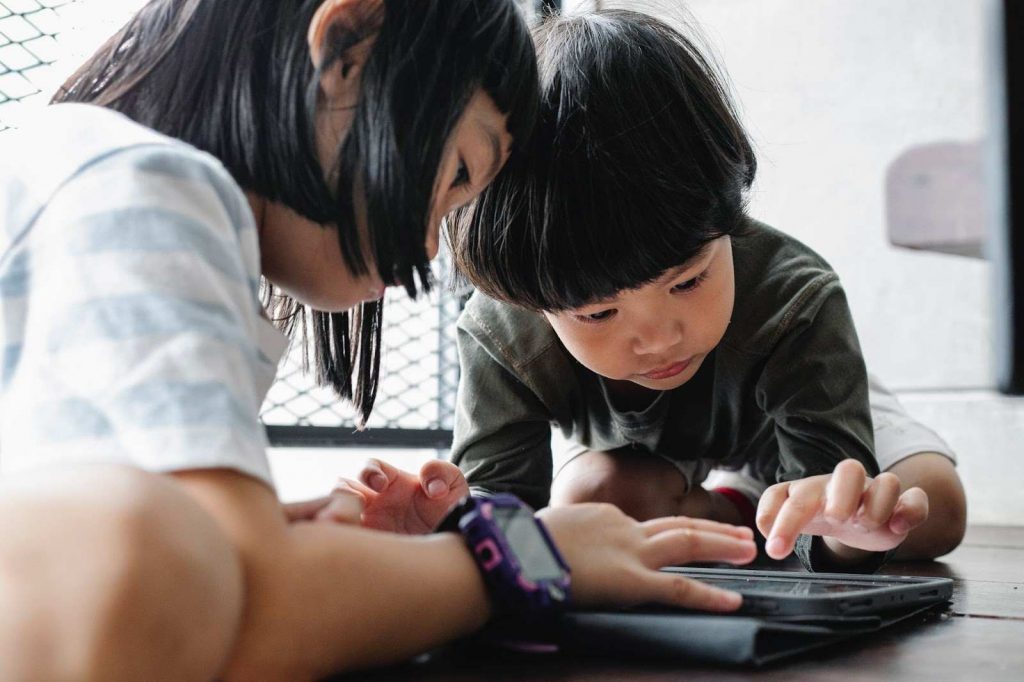
Learning through play (LTP) refers to using the natural curiosity and playful nature of children to develop learning programs that can help them learn and grow by promoting curiosity, exploration, and creativity.
At the same time, LTP helps children practice critical executive function and self-regulation skills. Skills like paying attention, inhibiting impulses, and remembering and updating information are all essential in early childhood development.
Likewise, LTP is not something that children do just in preschool, as many were led to believe. It’s something that children should be doing in preschool, pre-k, and kindergarten, as well as throughout the early grades of elementary school and at home with their parents as well. In fact, some would argue that even adults can benefit from LTP.
If done correctly, educational play at every age can have a direct positive influence on literacy and mathematics while supporting the child’s growth, as well as the development of their social skills, confidence, and self-regulation. The answer to the question – “how do children learn through play?” focuses on these elements in particular:
- Unstructured Activities: At the earliest ages, kids learn through play, but only without rigid plans. The activities are intended to allow children to explore and discover things on their own.
As the children reach kindergarten and start to enter the early grades of elementary school, activities can become a little more structured through the use of rules, competition, and even light teamwork.
- Enjoyment over Learning: No matter what age group the kids are, they should learn and play at the same time. Enjoyment is, thus, indispensable when trying to present learning to a child.
- Participation by One’s Own Volition: At the earliest ages, parents and teachers can initiate play learning activities, but ultimately, young children should be the ones who decide how they’ll play and for how long.
They may also choose not to play, and that’s okay, too. As the children get older and are introduced to more rule-based and competitive play, they must start to conform their play within the constructs of the activities.
- Process-oriented Activities: Preschool and pre-k, activities should focus more on the process of play rather than a learning objective. As the children get older, they may then be introduced to play that has objectives or goals.
- Make-Believe Scenarios: Developing creativity from a young age is incredibly important. By developing learning through play activities that use make-believe, kids can begin to unlock their imaginations.
Again, play-based learning can be adapted for children based on their age and where they are in their personal development. Additionally, activities can be physical and in the “real world” and they can be digital and facilitated on a device like an iPad.
From online educational learning games and digital worksheets to simply playing outside, building sand castles, and playing make-believe role-play games with their peers, play-based learning can be an enjoyable and fun way to help children develop and grow.
Related Reading: What is Creative Play? Importance & Activities for Kids
3 Benefits of Learning Through Play

Some of the most important benefits of play-based learning include the development of imagination, dexterity, confidence, and cognitive and emotional strength, as well as critical executive function and self-regulation skills like paying attention, inhibiting impulses, and remembering and updating information.
Play allows children to create and explore a world they can master while developing new competencies that can lead to confidence and resilience, both of which are fundamental skills to tackle future learning and the challenges they will face later in life.
With that in mind, here are three of the most important overall benefits of learning by playing.
1. Play Encourages Communication
Play allows children to develop speech and language skills, in addition to benefiting their listening skills. Children talk and listen continuously while they play whether they are playing alone or with a companion.
Much of the talk may be narration or an explanation of what they are doing in real-time that gives purpose to their actions. The more diverse their play is, the larger their vocabularies will eventually be.
2. Play Improves Cognitive Development
All types of play can be beneficial to develop cognitive skills, however, children who engage in pretend play and make-believe games tend to have more sophisticated levels of interaction with others.
It is also important to note that children who are deprived of play, and pretend-play especially, tend to have lower capabilities in the areas related to problem-solving, social skills, and academic success in literacy, math, and science, later in life.
3. Play Encourages Relationship-Building and Emotional Development
Play helps promote the development of social skills and emotional growth in children. Children who play with their parents and peers more frequently learn how relationships work, how to compromise, how to share, and how to socialize.
Social skills are also a critical component of language development. Language is more than simply speaking words, it’s how words are spoken, intended, and received.
Related Reading: Best Vocabulary Games to Play in Your Classroom
10 Examples of Play-Based Learning
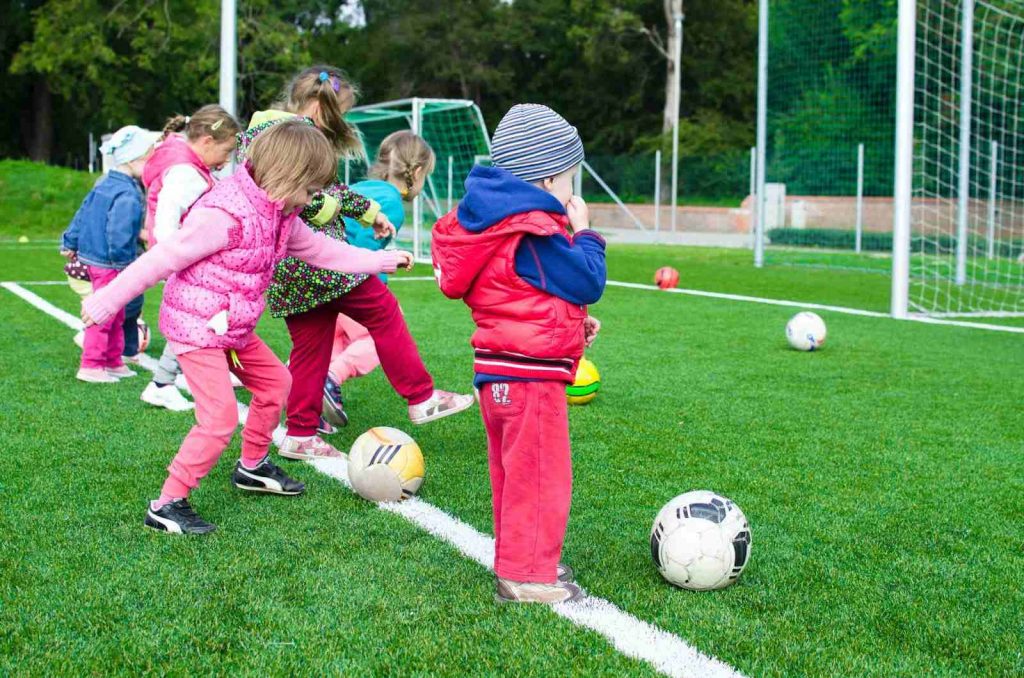
Whether a child is at home or in the classroom, they should be encouraged to play as much as possible. Again, they can also be in a playful state by enjoying physical activity and interacting with the environment. Or today, some of the best learning through play examples involve exciting digital learning apps.
For this article, we are going to focus on some of the best activities that are accessible to everyone, but still include play-based learning elements.
1. Sand and Water Play
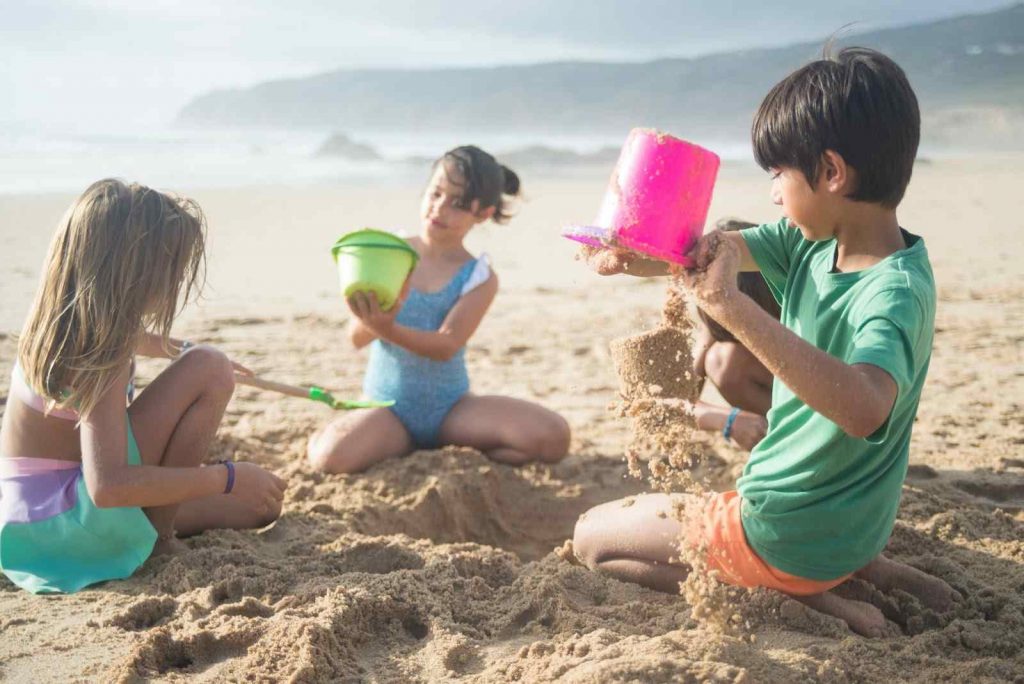
Sand and water play is a great opportunity to learn some of the foundations of science, such as the concept of volume and basic construction skills. Scooping, digging, pouring, and sifting sand or water can teach kids how tools work while building muscles and improving hand-eye coordination. Additionally, water play can provide the opportunity to learn that actions have permanent consequences.
2. Playdough
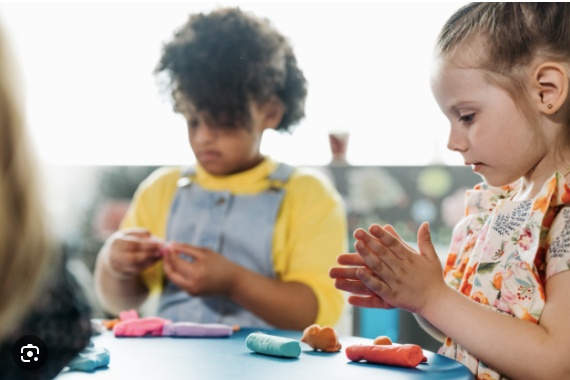
Playdough is great for developing creativity and using the imagination while strengthening fingers and improving dexterity. It also can help with fine motor skills and hand-eye coordination, and if they use their creations for pretend play, then additional cognitive skills can be sharpened as well.
3. Dress Up and Role-Play
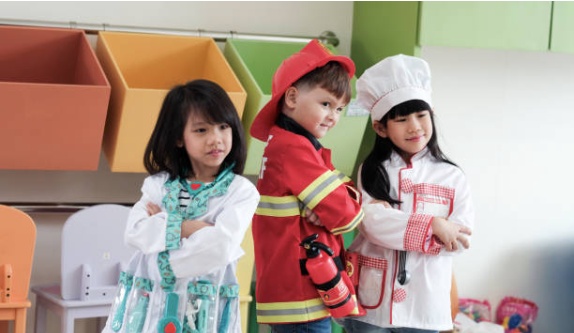
Allowing kids to engage in this sort of play based learning can help them start to make sense of the adult work and the roles we play. It can also begin to stimulate interests and encourage social interaction with their siblings or peers.
4. Doll, Action Figure, and Character Play
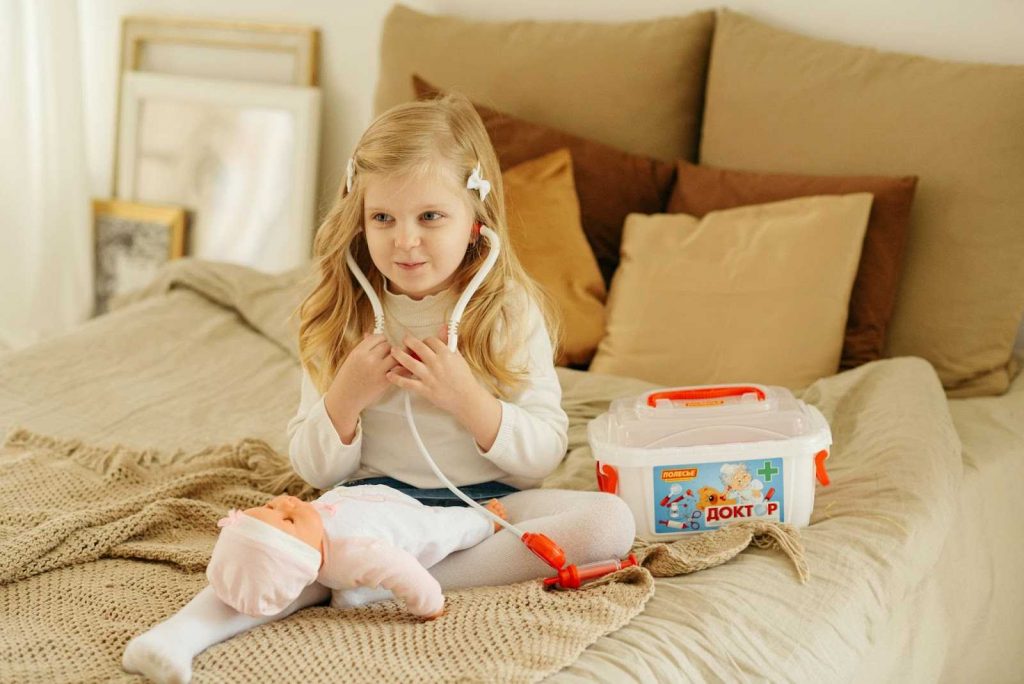
This form of reenactment allows children to develop social play, encourages creativity, stimulates imagination, and helps them begin to label and express feelings.
5. Drawing and Painting
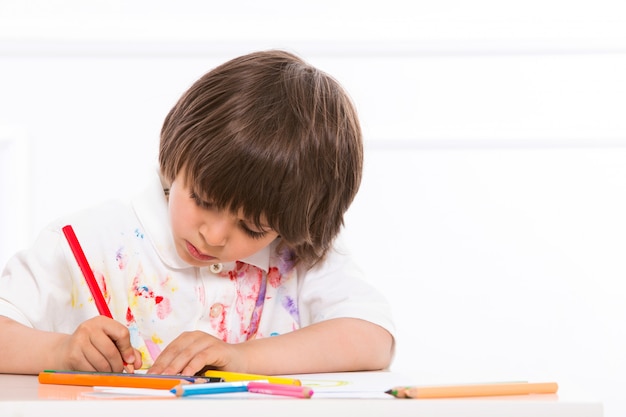
Every kid loves to draw and paint. Drawing and painting allow children to experience the sensory world and develop self-expression while working on the various skills they will need to start writing.
6. Blocks and Jigsaw Puzzles
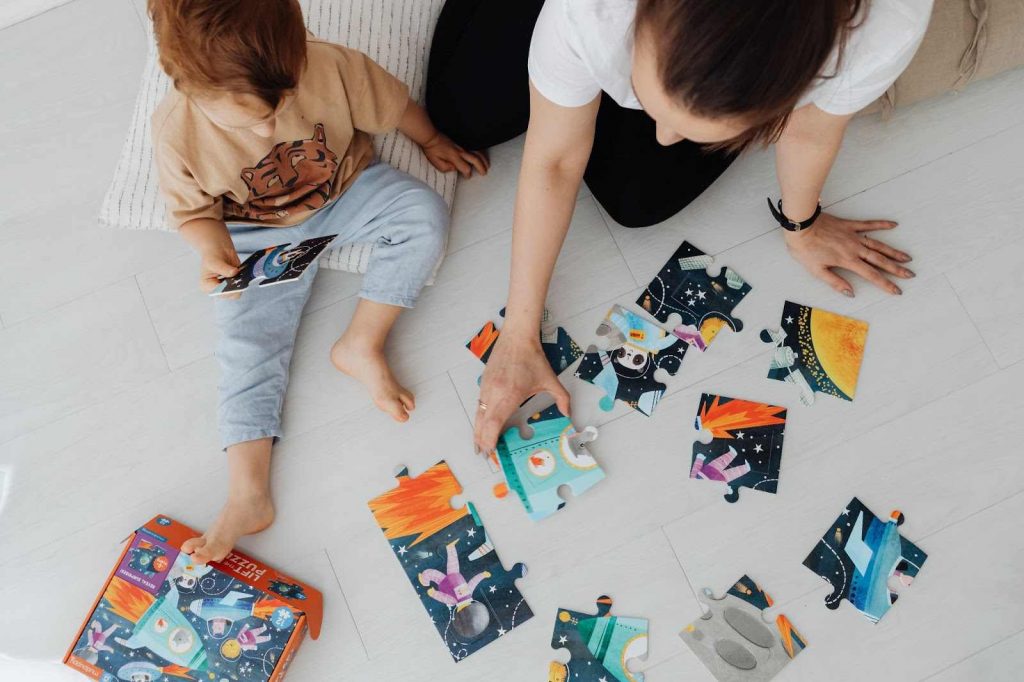
Blocks and jigsaw puzzles are great for developing spatial thinking, logical reasoning, ordering, and recognizing shape, size, and color.
7. Music, Dancing, and Singing

Music, dancing, and singing are so wonderful on many levels. It can introduce basic mathematical concepts like counting and rhythm while developing language and listening skills. Dancing is a great physical activity that can help develop strength, flexibility, and coordination.
8. Outdoor and Nature Play
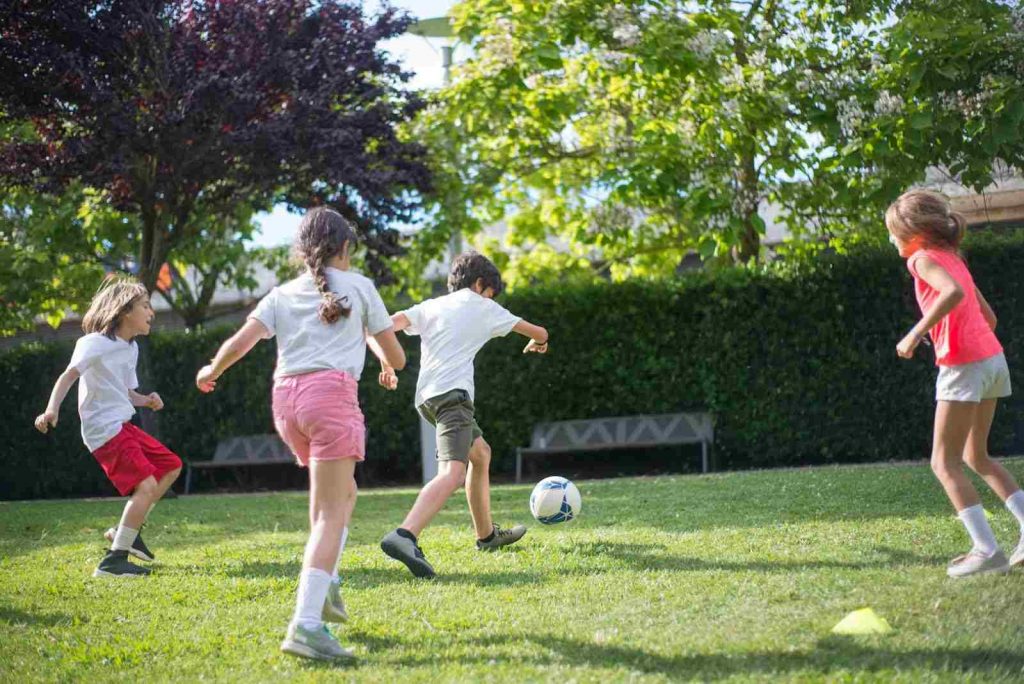
Running, jumping, climbing, swinging outdoors and playing in nature are excellent for increasing confidence, resilience, risk-taking, gross motor skills, curiosity, and independence. Also, the added benefit of being in nature can introduce children to the basics of biology and having respect for the environment.
Related Reading: Best Outdoor Games for Kids of All Ages
9. Cooking and Pretend Cooking
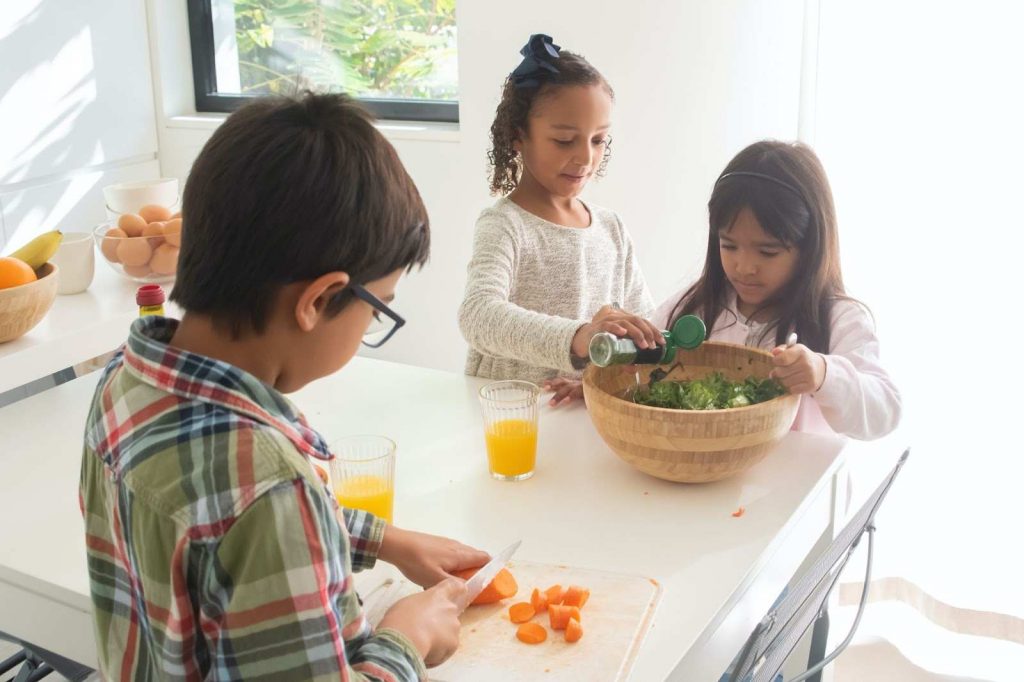
Cooking and pretending to cook as well as pretending to order at a restaurant, buy things in a shop, or serve people food is a great way of combining sensory play, basic math, the importance of home safety, and how to follow processes. It also can introduce children to some basics of human interactions in society.
Related Reading: Best & Fun Preschoolers Cooking Activities With Recipe
10. Basic Board Games
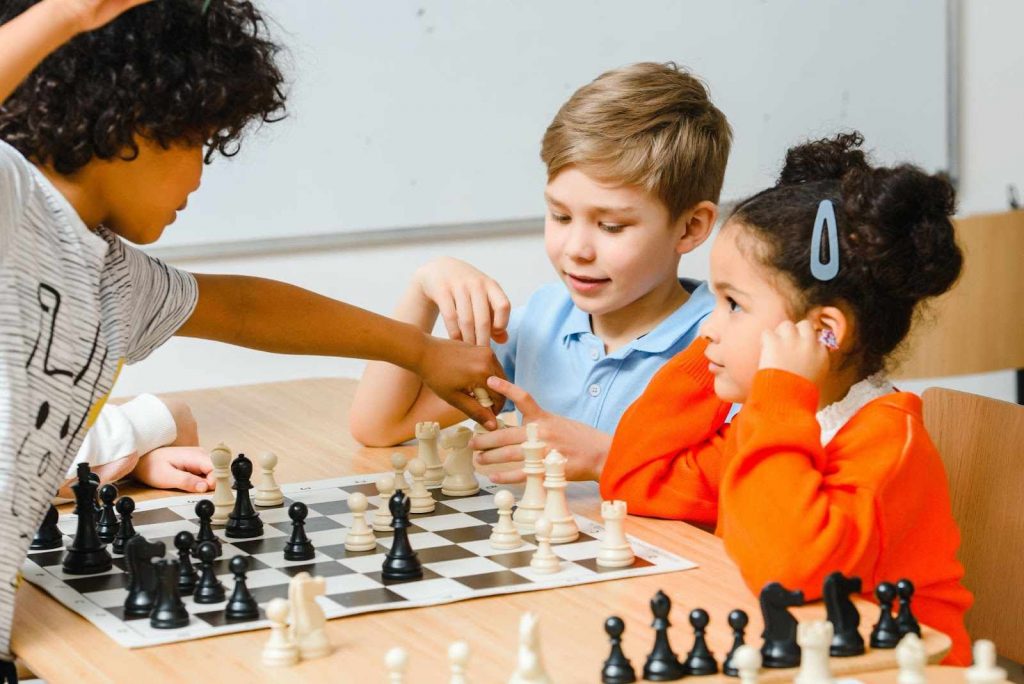
Simple board games can help introduce the concept of rules and competition while at the same time teaching the child about numbers, colors, shapes, turn-taking, and sharing.
Again, these highly recommended play learning activities are intended for children to discover, explore, and interact with the physical world around them. But if you really want to take your child’s learning to a whole nother level, try introducing digital games and worksheets.
Parents who are looking to create bespoke digital worksheets for their children should look for a DOCX editor with features that allow them to create, view, and download worksheets and other documents on all of their personal devices. Let’s say your child wants to know more about dinosaurs after your little chat after school. Instead of being left on the spot, you can just export images, format text, and even embed links to National Geographic documentaries. From that point, you can focus on the “cool” elements and give your child a fully digital, worksheet-based experience. But do start from the basics, like building sand castles.
Related Reading: Best Classroom Math Games For kids
10 Tips For Learning Through Play at Home
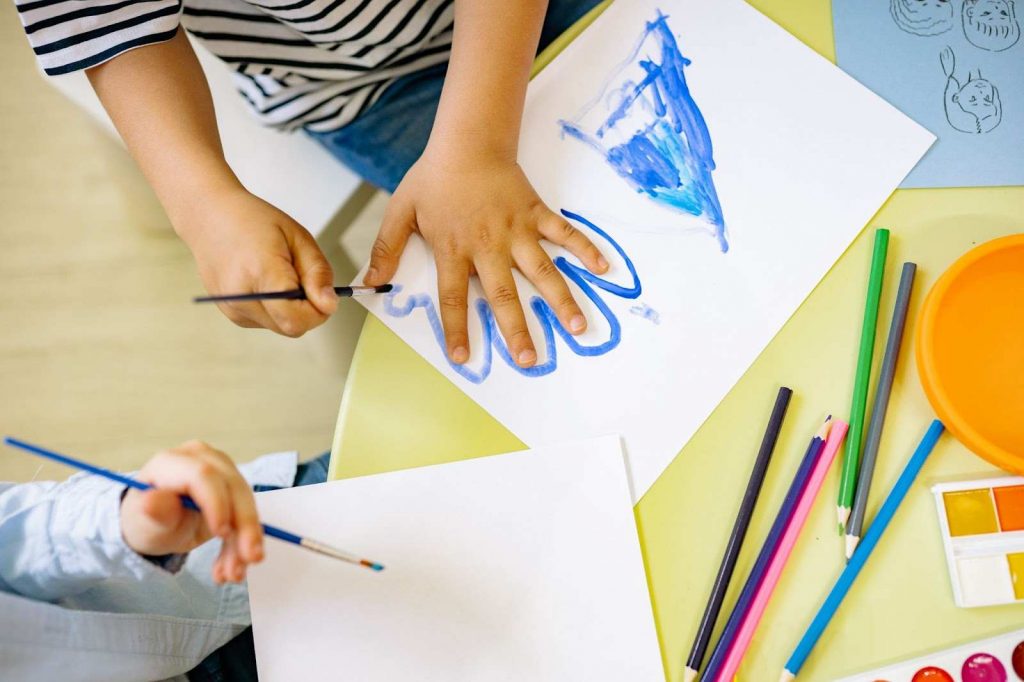
If you are a parent who is looking to do as much as they can to aid your child’s development through play-based learning when your child is at home, then in addition to having some good suggestions for activities, you may also want some solid tips for how to implement play-based learning activities at home.
Here are ten of the best tips for facilitating the way your children learn through playing at home:
- Eliminate distractions: Make sure to turn off TVs, tablets, and any other electronics that may get in the way of your child using their imagination and exploring their environment.
- Don’t overschedule: Make sure you don’t crowd your child’s day with endless activities or places to go and people to see. A large part of play-based learning is simply having the free time and space to explore the world around them with no distractions and no structure.
- Engage but let them lead: It is okay to engage your child and pose suggestions, however, it is also important to let them lead the way when it comes to the direction of play. Letting your child lead allows for greater exploration, self-regulation, confidence development, and causal understanding.
- Choose good toys: Pick out toys that are fun but that also provide some level of educational experience that is vital to play based learning.
- Let them fail: Letting your child learn from their mistakes can teach them resilience and coping skills. It may be difficult to sit by passively when they fail at something as important as improving reading readiness but it is part of the learning process.
- Repeat, elaborate, and question: Repeat the things your child says or sounds they imitate to help reinforce their vocabulary and cognitive skills. For older children, ask open-ended questions rather than simple yes or no questions.
- Encourage them and be positive: Give praise often and frequently and bring a positive attitude to play. Also, encourage them to stay positive, even when they fail.
- Make it fun and creative: Create fun spaces that are full of toys, dress clothes, costumes, play kits, and other items that fully engage their imagination and develop their creativity.
- Give them space: Allowing space for your child to play on their own is ideal for letting them make their own choices and build their independence and overall confidence.
- Introduce learning into their everyday routine: Learning can be done throughout the day while being incorporated into everyday activities and routines. Counting stairs, singing songs, feeling fabrics and textures, tasting new foods, and exposing them to new smells, all of these things are easy to do and can be beneficial as well.
How is Play-Based Learning Different from Academic Learning?
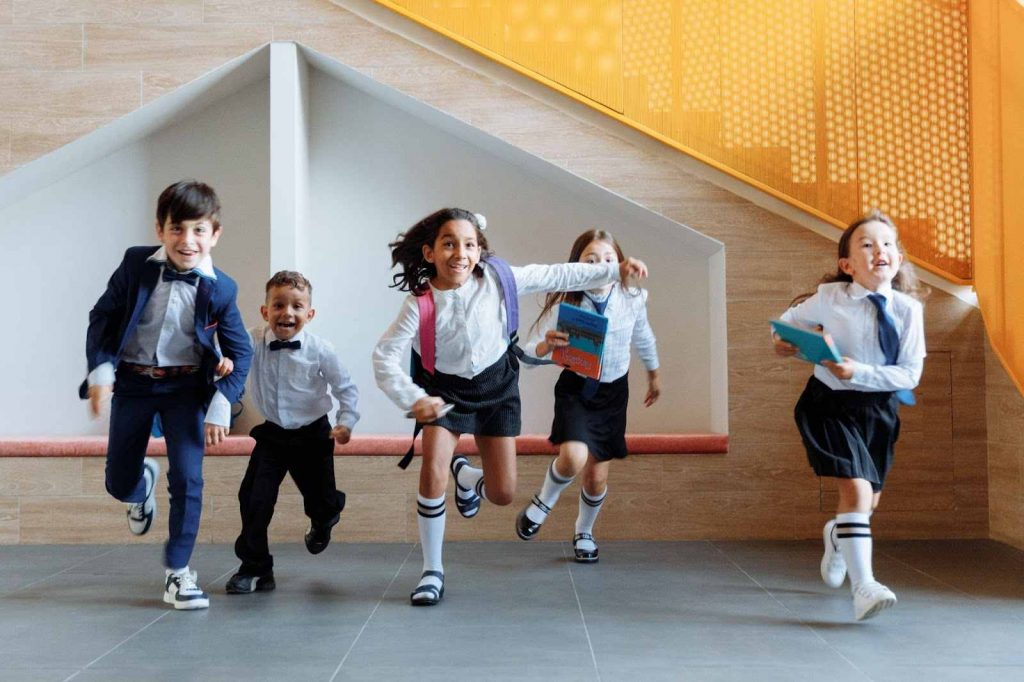
Play-based learning is much different from academic learning in many ways. Academic learning involves subject-specific learning that is facilitated by teacher-led instruction through the use of traditional materials like worksheets, textbooks, and videos. Play-based learning involves more child-led curriculums that focus on exploration and discovery through the use of non-traditional classroom materials. Also, play-based learning is more open-ended and abstract whereas academic learning is more rigid and structured.
As children get older, there is of course the need for academic learning, however, for the younger ages, many psychologists and educators believe that play-based learning can be far more effective than academic learning when it comes to early childhood development.
How does a Play-based Learning Environment Support a Kid’s Development?
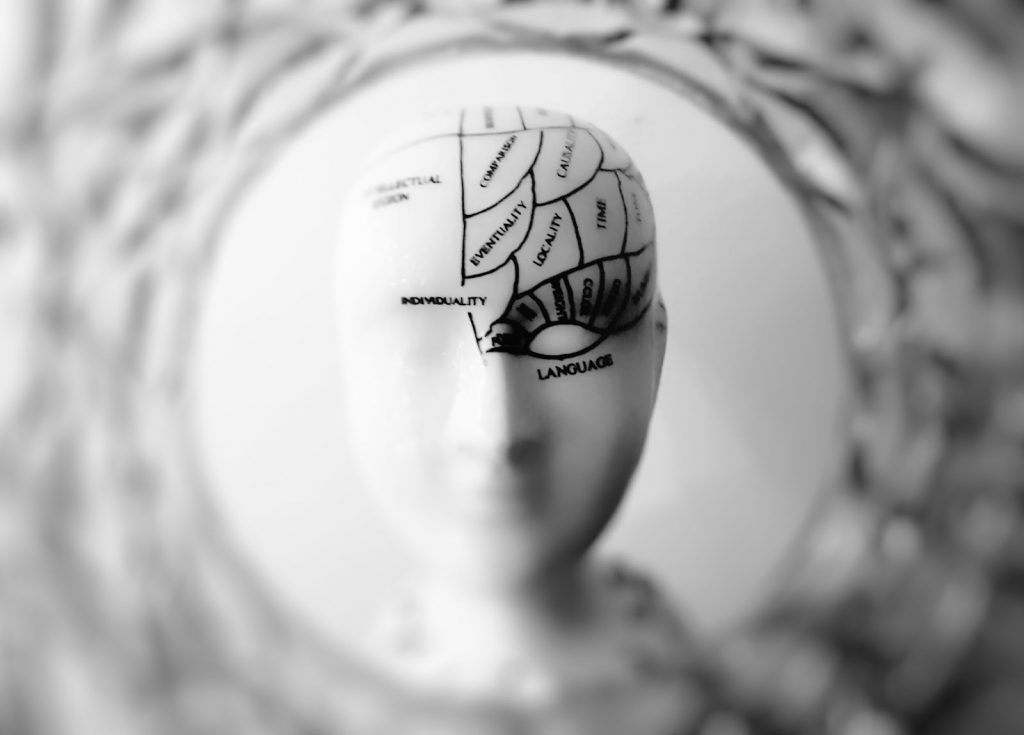
The environment that a child plays in is incredibly important to support learning and development. The environment could be the classroom, in the home, or outside and in nature. In the classroom and at home, a child’s environment should be filled with stimulating toys, bright colors, shapes, fun objects, and plenty of stimuli to encourage learning as well as to invoke the imagination. For example, having dress-up clothes, paints, crayons, paper, building blocks, musical instruments, and other age-appropriate games is a good start.
When it comes to taking kids outside and interacting with nature, children should have obstacles to climb and play on as well as access to water and sand as well as space to be amongst trees, open fields, flowers, and insects. All of these things are excellent for a child’s development, and the more diverse it is, the more stimulating it can be to their development.
What are the Some of the Challenges Of Integrating Learning Through Play?
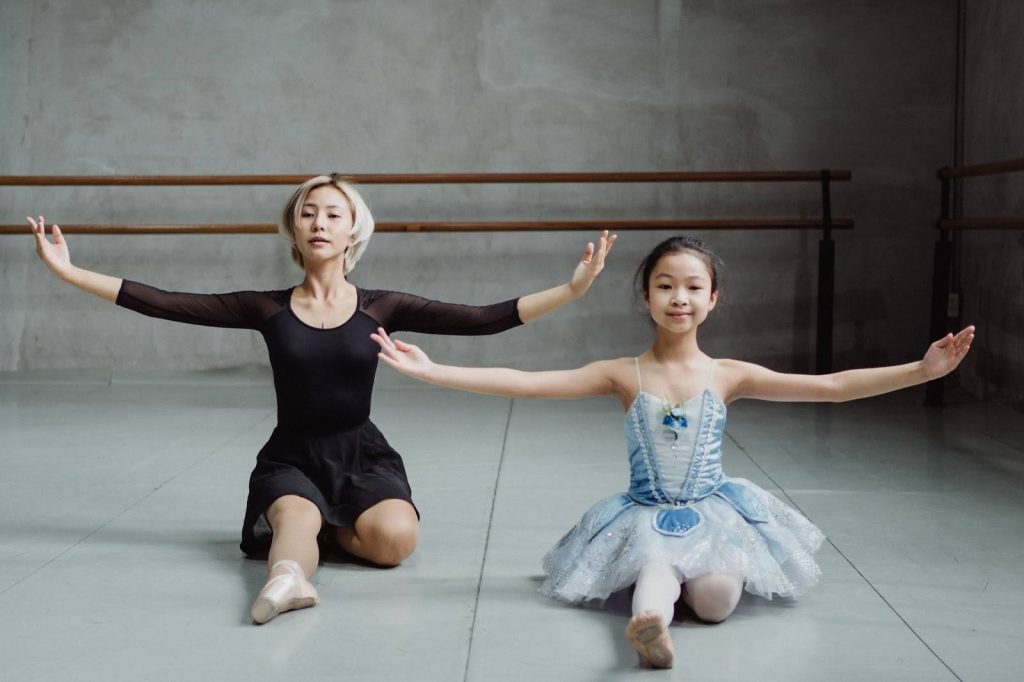
Some of the main challenges of integrating play-based learning, in the classroom and at home, can be a lack of training and education of teachers and parents, a lack of time, a high teacher-to-student ratio, and monetary constraints that restrict access to toys, educational tools, and supplies and materials.
Also, some additional pitfalls include introducing too much structure, not allowing children space, and not letting children lead where the play goes and how long it goes on. Overall, the importance of learning through play may be overly-reliant on proper pedagogical practices, which have been, truth be told, more accessible to parents and educators in recent years.
Which is a Suitable Play-based Learning Program for your Child?
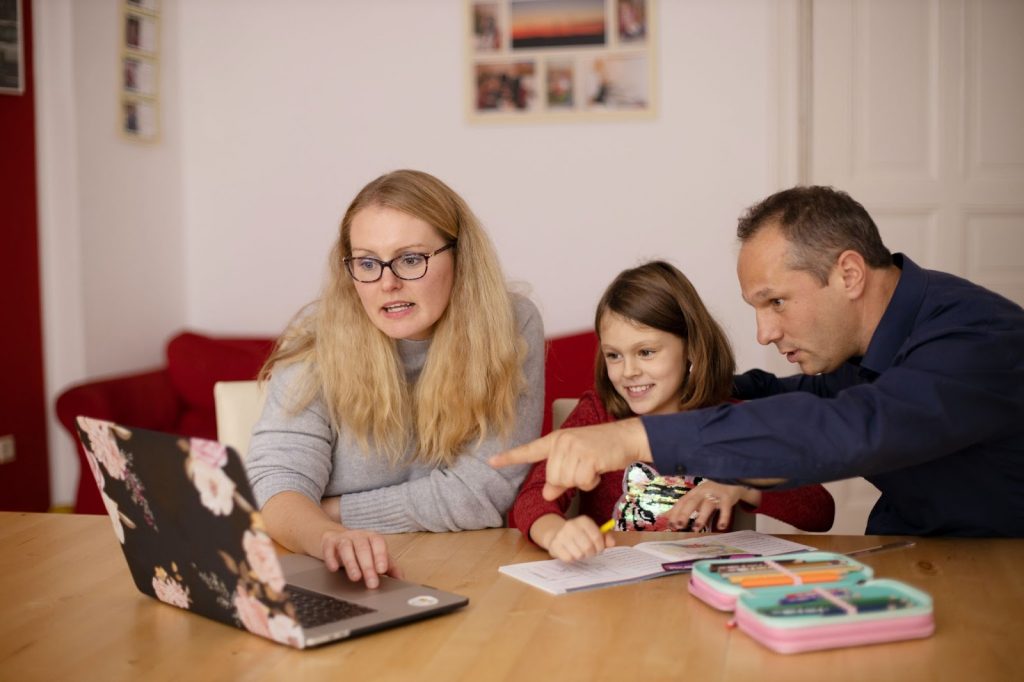
Choosing a suitable play-based learning program for your child is a pivotal decision. These programs blend fun and education, fostering crucial skills. In this guide, we’ll explore key factors to consider when selecting the perfect play-based learning experience to ensure your child’s growth and development is nurtured to its fullest potential. Selecting a suitable play-based learning program involves considering the following steps:
- Understand Your Child’s Needs: Identify your child’s learning style, interests, and developmental stage to match them with an appropriate program.
- Research Options: Look for play-based programs in your area or online, and gather information about their philosophies, methodologies, and curriculum.
- Visit Programs: Schedule visits or virtual tours to get a feel for the environment, observe how teachers interact with children, and assess the quality of play materials.
- Check Credentials: Ensure that the program and its teachers are accredited, certified, or affiliated with reputable educational organizations.
- Review Curriculum: Evaluate the curriculum to see if it aligns with your child’s educational goals and provides a balance between structured and open-ended play.
- Consider Safety: Verify that the program follows safety and hygiene standards, including appropriate teacher-to-child ratios and emergency procedures.
- Assess Inclusivity: Confirm if the program accommodates diverse learners and promotes inclusion and diversity.
- Talk to Other Parents: Seek recommendations and insights from parents whose children have attended the program.
- Cost and Schedule: Consider the program’s cost, schedule, and location to ensure it fits your family’s logistical and financial needs.
- Trust Your Instincts: Ultimately, trust your instincts and choose a program that resonates with your values, meets your child’s needs, and feels like the right fit for your family.
Conclusion
“Learning-Through-Play” is a pivotal approach in early childhood education. It enables children to explore and understand the world around them in a fun and interactive manner. Through play, kids develop essential cognitive, social, and emotional skills, including problem-solving, creativity, communication, and empathy. This approach fosters a love for learning, laying a strong foundation for their future academic success. Moreover, it cultivates resilience and adaptability as children encounter challenges and experiment with different solutions. Ultimately, LTP not only enriches children’s lives but also shapes them into well-rounded individuals ready to navigate the complexities of the world with confidence and curiosity.
Related Reading: Best Math Games for Kids That Are Fun to Play
Frequently Asked Questions (FAQs)
How does play support problem solving?
When children play together, they solve various problems, like establishing some rules of play or devising a format that decides whose turn comes first.
Is there an academic study that supports the idea that children learn best through play?
Piaget’s theory of cognitive development states that play is vital to the development of intelligence in children. Also, as children mature, their environment and play encourage further cognitive and language development.
Is play the language of a child?
Yes, play is the natural language of a child. Anything that gives a gateway into the heart and feelings of a child, it’s play.

















